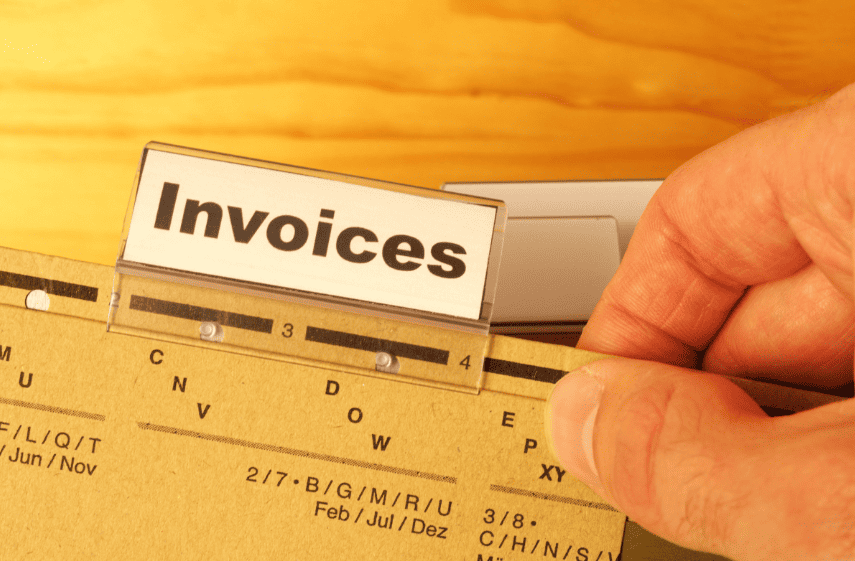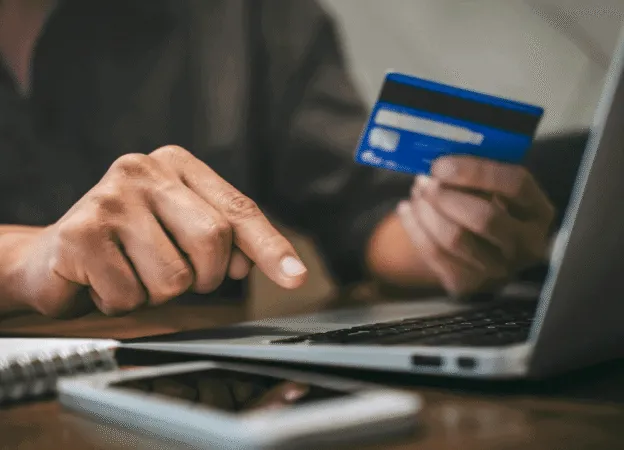Are you feeling overwhelmed by the invoicing process? You’re not alone. Invoices can be complex documents with lots of information to consider and apply correctly — and that doesn’t even include all the software options out there!
Table of Contents
Whether you’re in between accountants or just getting started on your own, understanding these invoicing basics for business will set a solid foundation going forward.
Let’s dive deep into the invoicing basics for business – from start to finish: what makes up an invoice, setting up systems for tracking payments, and more. Get ready to take notes as we cover everything you need to know about getting started with creating effective and accurate invoices today!
What Is An Invoice?
An invoice is an itemized list of goods sold or services rendered, which typically includes prices, quantities, descriptions, and payment terms. Simply put, it’s a critical document that outlines the details of a transaction between a seller and a buyer.
In addition to serving as a proof of sale, an invoice also serves as a means of requesting payment for the goods or services delivered. Having an accurate and timely invoice system is critical for any business because it ensures that transactions are recorded correctly, clients are billed accurately, and payments are received promptly.
With the advent of automation, this job is made even easier — software like the one at Prime Software can handle all of these tasks and more. Thus, understanding the invoicing basics for business and properly managing your invoicing process is a key aspect of running a successful business.
Types of Invoices
While all invoices serve the same purpose of requesting payment for goods or services, there are several types of invoices that businesses may use. Here are a few common invoice types you should be aware of:
Proforma Invoice
The proforma invoice is not a true invoice since it is not a request for payment, but rather a quote for goods or services that will be provided. Essentially, it outlines the terms of a deal before it is finalized.
This invoice is often used to help both parties understand what will be sold and at what price point before the actual purchase agreement is made. Using a proforma invoice can avoid any confusion or misunderstandings before the transaction is completed.
Tax Invoice
This document is essentially a record of any sale you make and the taxes associated with it. It’s essential for bookkeeping purposes, and can also be used to claim back any input tax credits.
While the specifics of a tax invoice can vary depending on your region’s tax laws, there are some key elements that are common to most. These include the date of the transaction, the names and addresses of both parties involved, a description of the goods or services provided, and the total amount charged (including taxes).
Recurring/Subscription invoice
As businesses expand, they may have a growing roster of clients or customers. With this growth comes the task of generating invoices and ensuring timely payments. A solution that has become increasingly popular is the recurring/subscription invoice.
This option simplifies the process for both the business and the clients as it sets up a regular billing cycle so that the client is automatically charged on a predetermined date. As a result, businesses can ensure that they receive timely payments while clients are spared the hassle of remembering to make payments each month.
Credit note/Debit note
When managing finances, credit notes and debit notes can be incredibly useful tools. Essentially, credit notes serve as a way to reduce the amount that a customer owes a business, while debit notes are used when a customer owes a business additional funds.
While they may seem straightforward, understanding the ins and outs of each can be quite tricky. However, with the right knowledge and careful attention to detail, using credit and debit notes can keep your financial records accurate and your business running smoothly.
Elements of An Invoice
Though invoices can vary slightly in layout and design, there are certain elements that should be present to ensure accuracy and professionalism. Let’s take a closer look at each.
Company Information
This section should include the company’s name, address, contact information, and any other identifying details. If your company has a logo or branding elements, they can be included here as well to make the invoice more visually appealing.
Client Details
Similar to the company information, this section should include the client’s name, address, and contact details. If your business has multiple clients or customers, it may be helpful to assign them unique identification numbers for easier tracking.
Line Items
This is where you list the goods or services provided, along with their corresponding prices and quantities. It’s essential to be as detailed as possible here to avoid any confusion or disputes over payment.
Payment Terms
This section should outline the agreed-upon payment terms, including the due date, acceptable forms of payment, and any applicable late fees or discounts. This information should be discussed and agreed upon before the invoice is sent to avoid any delays or misunderstandings.
Totals
Finally, the totals section should clearly list the total amount due, including taxes and any additional charges or credits. This section serves as a summary of all the line items listed above and ensures that the client knows exactly how much they owe.
Whether you are making a manual invoice or taking advantage of software, understanding the basics of invoicing is essential for any business. Thanks to this knowledge, you can ensure accurate and timely payments from your clients, keeping your financial records in order and helping your business grow.

How to Create an Invoice
Now that we have a better understanding of the invoicing basics for business and its different types, let’s go through the steps to create one.
- Choose a template: Select an invoice template that suits your business needs and personal style. Many software options offer customizable templates for easy invoicing.
- Gather all necessary information: Make sure you have all the details of the transaction, including client information, services provided, and agreed-upon payment terms.
- Create an invoice number: Assign a unique identification number to each invoice for easier tracking and record-keeping.
- List line items: As mentioned before, be as detailed as possible when listing the goods or services provided, their prices, and quantities.
- Include payment terms: Clearly outline the payment terms agreed upon to avoid any confusion or delays in receiving payment.
- Calculate totals: Use a calculator or invoicing software to ensure accurate calculations of all line items and applicable taxes.
- Proofread: Before sending the invoice, double-check for any errors or omissions that may cause issues with payment processing.
- Send the invoice: Once you’re sure everything is accurate, send the invoice to your client through email or traditional mail.
Once the invoice is received and paid, be sure to record the transaction in your financial records for future reference. With practice, creating invoices will become second nature and will streamline your business operations.
If you don’t know how to make an invoice yourself — don’t worry! Reliable software can do it for you, leaving you with more time to focus on other aspects of your business.
Tips for Streamlining Your Invoicing Process
Congratulations — you know all the basics of invoicing! Now, you are ready to start creating and sending invoices. Here are some additional tips to streamline the process even further:
- Utilize automation: As mentioned before, using software that automates invoicing tasks can save you valuable time and effort.
- Set up a regular billing cycle: If your business offers recurring services, setting up a regular billing cycle will make invoicing more predictable for both you and your clients.
- Keep detailed records: Accurate record-keeping is essential for financial management. Be sure to keep copies of all invoices and payments received for future reference.
- Communicate clearly with clients: To avoid any disputes or delays, make sure you have clear communication about payment terms and expectations from the start.
By implementing these invoicing basics for business tips, you can streamline your invoicing process and ensure timely payments from your clients. With the right knowledge and tools at hand, invoicing can become a smooth and efficient task for any business owner.
Mastering the art of invoicing is, above all, an integral part of your business that reinforces your brand, ensures proper financial record-keeping, and facilitates a smooth cash flow.
Embrace the available technology, such as invoicing software, to automate and simplify this process. Effective invoicing is efficient, clear, and professional, and includes all the necessary information to leave no room for misunderstandings.
By understanding and implementing these invoicing basics for business, you set your company up for financial success and free up time to focus on other areas of business growth. Just make sure your invoices are not an afterthought, but a priority!
Invoicing Basics for Business – FAQs
Do I need to send an invoice for every transaction?
It is highly recommended to send an invoice for every business transaction.
This practice ensures both parties have a clear understanding of the goods or services exchanged, the costs involved, and the payment terms. Invoices are also crucial for bookkeeping and tax purposes, maintaining accurate financial records.
Moreover, invoices offer a professional approach to requesting payment and can establish credibility and trust with your clients.
Can I manually create invoices?
Yes, you can manually create invoices using templates available in programs like Microsoft Word or Excel. However, using invoicing software significantly streamlines the process, reduces the risk of errors, and can save you valuable time, especially when dealing with a large volume of transactions.
How often should I send invoices?
The frequency of sending invoices depends on the type of goods or services your business offers. For one-time transactions, an invoice is typically sent after the transaction is completed.
For recurring services, setting up a regular billing cycle, such as monthly or quarterly, can make the process more efficient for both you and your clients.
What happens if my client doesn’t pay the invoice on time?
If a client fails to pay an invoice by the due date, it’s important to follow up with them promptly. This can be done through a friendly reminder email or phone call, depending on your preferred method of communication.
If the issue persists, it may be necessary to send a formal notice and consider implementing late fees or other consequences for late payments in your payment terms. In some cases, legal action may need to be taken to collect the payment owed.



